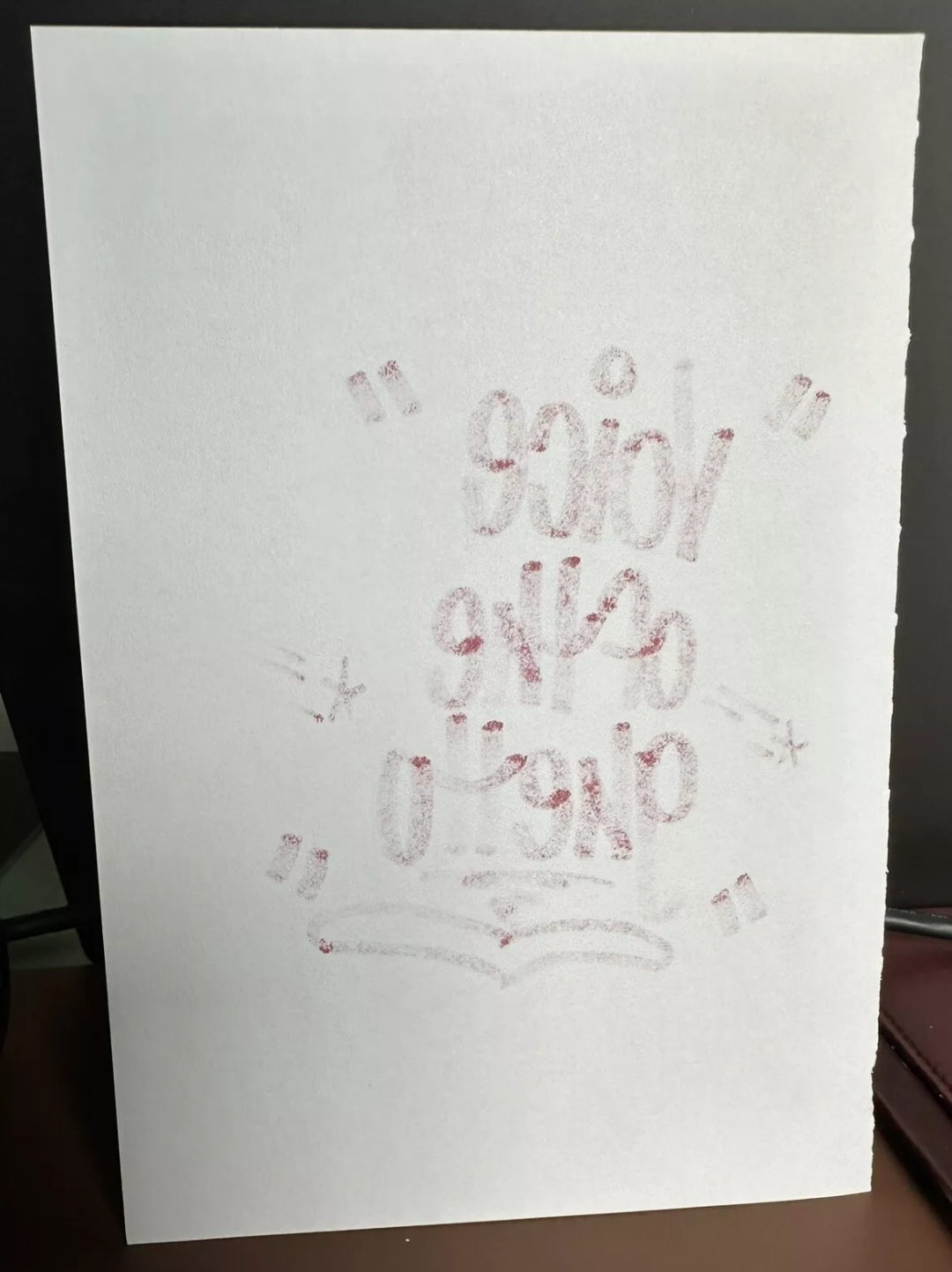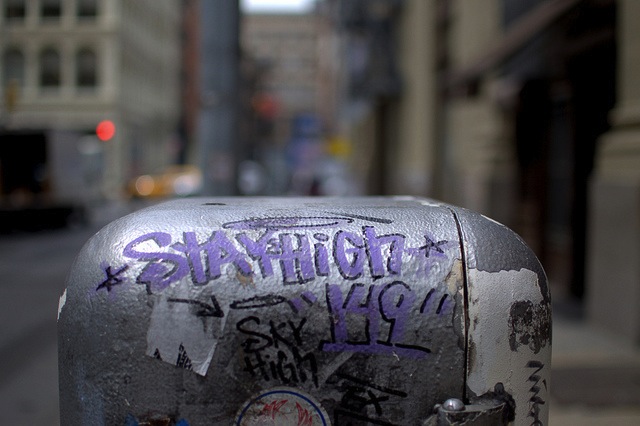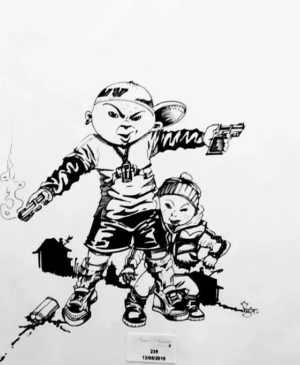STAYHIGH149 SKETCH “VOICE OF THE GHETTO” 2005
400,00 €
STAYHIGH149
SKETCH “VOICE OF THE GHETTO”
MARKERS ON PAPER
2005
In the graffiti community we tend to throw the word “icon” and “legend” around a bit too loosely, but I think everyone is on board with Stayhigh 149, one of the greatest writers ever.
Stayhigh 149 ( Wayne Roberts ), was born in Emporia, Virginia in 1950. His family migrated North to Harlem when he was 7 years old, he became a teenager during the tumultuous 60s, and witnessed more than his share of rioting and political injustice. In the late 60s the family moved once more to the Bronx, where they resided on the Grand Concourse, an area that was once the pride of the borough but had become run down. Upon quitting High School, Roberts took up a messenger job at a Wall Street firm where he commuted to the southern tip of Manhattan daily. As the decade came to a close Roberts became intrigued by the graffiti that greeted him on his trip to work. Subway graffiti was a brand new urban sport that was just gaining steam in 1970, and Wayne Roberts knew he wanted to be a part of it.
Roberts had already been nicknamed Stayhigh by his friends, he always had weed, and he always smoked more than those around him, he added the 149 to his name as a nod to the Grand Concourse. Because of his age, Roberts had a better sense of aesthetics, and his tag style quickly reflected that. In 1972, at the age of 22, Wayne Roberts final tag style emerged as he took the stick figure from the Saint TV show, inverted it, gave it a joint to smoke, and placed it just above the final letter of his name. Up until this point Stayhigh’s career had been erratic, but when this one final element was added, Wayne Roberts went on a three year writing spree that writers still talk about. Every tag a gem.
As a 22 year old man with a job as a messenger, Roberts reveled in the knowledge that he was paid to do what he was passionate about.
Whenever his boss came over and asked if he wanted to take a long train ride to Brooklyn, he was ecstatic. On the trip he’d hit every car in the train, on the way back he’d stop at the Atlantic Avenue Writers Bench, where all the Brooklyn writers hung out, and team up with Spin to hit Brooklyn lines. When he was out of ink he’d go back to his job.
In 1973 his portrait appeared in a New York Magazine article about graffiti, giving the Transit cops a face to attach to the name. On one of his Brooklyn messenger trips he was arrested with Spin by officers who carried that photo around. He was lucky to get off with a Desk Appearance Ticket, or DAT, as they were commonly referred to. By the summer of 73 he had become a hot commodity, he was so famous that he could no longer hang out at the Writers Bench at the Grand Concourse train station, too many people asked for autographs. Roberts desperately wanted to write again and found a unique way to do it.
While taking the train to work, he read the column Voice of the People in the Daily News. In a moment of inspiration, he crossed out the word people and replaced it with the word ghetto. Voice of the Ghetto. He looked up from the paper and noticed the open ad spaces that rose vertically behind the strap hangers heads. Roberts sketched out the name on the paper until the tag reflected the space, it would be a three tiered name, underscored by a heart, with quotation marks surrounding it. The tag needed to be big and beautiful to fill the space so he decided to use a wide tip uni-wide marker with a chisel point. Uni-wide markers were made specifically for poster making, they ran out of ink quickly and the artist was expected to buy extra cans of ink to refill it. Stayhigh had his own way of refilling a marker, to make it more dramatic he would pour three different color inks into the nib to give it it’s own identity, this was dubbed the three toned uni.
Roberts again went on a writing spree after a short hiatus, this time he didn’t tell anyone, and only used the name Voice of the Ghetto. Aside from his normal daytime writing, at night he’d pick off one train yard at a time and go through as many as a 100 cars a night. Within a months time it was all anyone was talking about at the Writers Bench, with so many other innovative events happening in the graffiti scene in 1973, the sheer coverage and unique style of the Voice of the Ghetto tag became topic number one. His secret went public and he was quickly acknowledged as the writer with the two greatest tags.
As graffiti began to move away from the tag and more towards piecing Roberts began to fade from the scene. By the late 70s he had taken a job at the World Trade Center, and began raising a family. Drug addiction had become a problem for him, and as other writers began making money in the gallery scene, Roberts stayed on the sidelines, doing a vanishing act that would make Houdini proud. He reemerged at a gallery show in 2000, and was so overwhelmed at the crowds of people begging for autographs that he had to flee through the back door. The next day the New York Times published an article on the event and the world knew he was back.
Between 2000 and 2014 he continued to write his name everywhere, even developing a new tag for when he had little time or space – it was the smoker – and it could be spotted in every neighborhood in the city. A whole new generation of writers saw how he did it old school as he hit trains with markers in the midle of the day, at a time when most writers focused only on the streets. Roberts enjoyed writing with younger writers, and they were thrilled to meet him. Roberts started painting on canvas again in 2000 and those works can be found in collections around the world.
In the end, Roberts had beaten his addiction, but his past had caught up with him, he died at the age of 62 in 2012. He died as he lived, as a graffiti icon, the likes of which we’ll never see again.

















